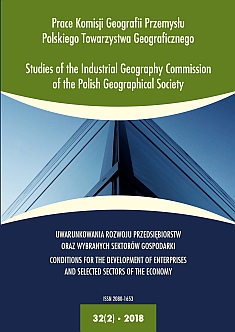Produkcja taboru tramwajowego i trolejbusowego na Ukrainie na tle sytuacji taborowej przedsiębiorstw
Production of Trams and Trolleybuses in Ukraine in the Aspect of Transport Companies Fleet Capability
Author(s): Ivan Rudakevych, Andrzej SoczówkaSubject(s): Economy, Recent History (1900 till today), Economic development
Published by: Wydawnictwo Uniwersytetu Komisji Edukacji Narodowej w Krakowie
Keywords: fleet; tram; trolleybus; production; Ukraine;
Summary/Abstract: Production of trams in the area of Ukraine started during the interwar period. However, production of trolleybuses started at the end of the 1950s. Due to huge amount of imported fleet from Russia and Czechoslovakia, production of these means of transport stopped. At the beginning of the 1990s, due to economical crisis and financial problems, import was rapidly reduced. Economic disintegration as a result of dis-solution of the Soviet Union constituted a serious problem for tram and trolleybus companies. Existing economic ties were severed not only between Central and Eastern European countries but also between ex-Soviet republics. In these tough economic conditions, Ukraine decided on resumption of trams and trolleybuses production. The aim of this article is the analysis of trams and trolleybuses system fleet capability in Ukraine, 25 years after Ukraine’s independence. The article shows comparison of two aspects: firstly, Ukrainian manufacturers market of trams and trolleybuses, secondly, transport companies fleet capability. The research areas of the article are Ukrainian border before 2014. The research is basic in character with data gathered mainly by the authors. The authors pass on an analysis of fleet production in Ukraine after 1991. The article describes not only the models and brands produced but also statistics of the size of production and its recipient. Situation on manufacturing market of trams and trolleybuses was compared with transport companies fleet capability. Research confirmed a systemic crisis. Municipal tram and trolleybus companies, each year generate financial losses and higher indebtedness. New trams and trolleybuses are bought rarely and in small number which results in the number of potential providers being limited. Moreover, when the choice of the most beneficial offers is made, native manufacturer is preferred. Therefore, offers do not have to be competitive in terms of price, quality and technology. What is more, it increases distance of development to main manufacturer in Europe. Due to relative poor quality of their portfolio products, native producers have to earn only with low-paid national production orders.
Journal: Prace Komisji Geografii Przemysłu Polskiego Towarzystwa Geograficznego
- Issue Year: 32/2018
- Issue No: 2
- Page Range: 105-128
- Page Count: 24
- Language: Polish

